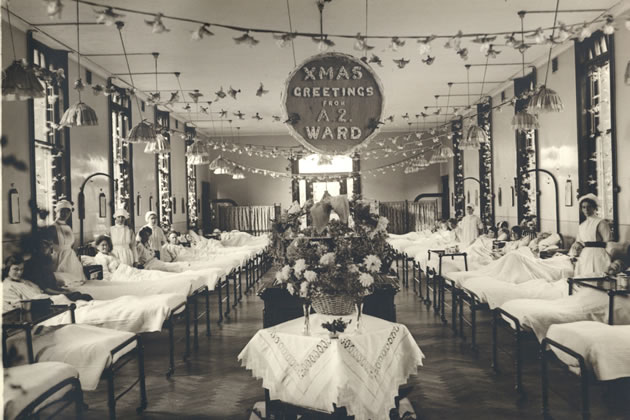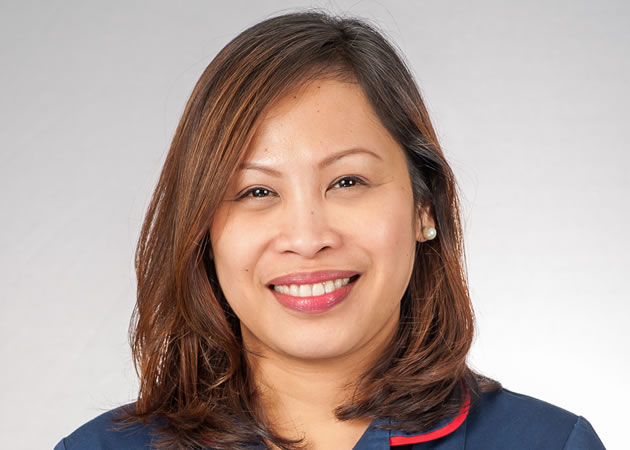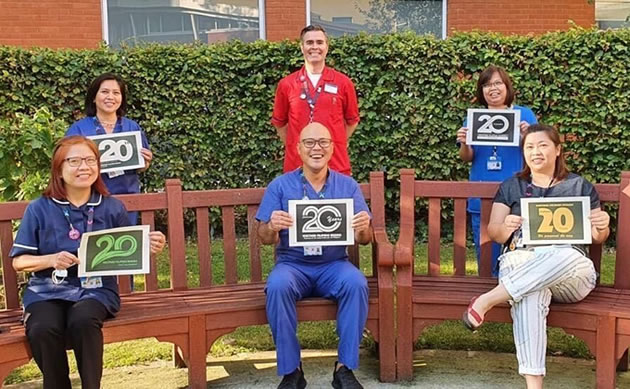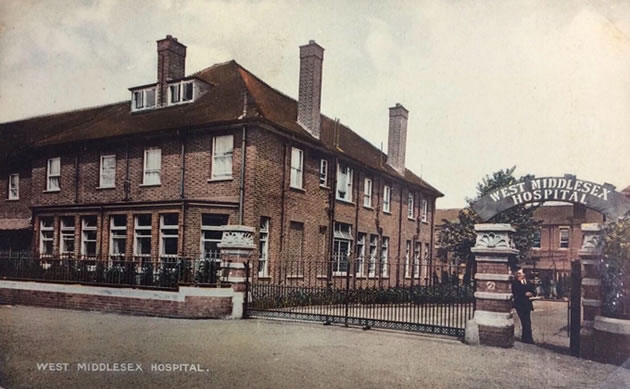West Middlesex Hospital Marks Its Centenary
Staff putting celebration on hold until next year as they deal with Covid-19

Old Ward At Xmas. Picture: CW+ Charity
Princess Diana and the dazzle of London was the inspiration behind Shiela Tana’s dreams of working in the UK.
As a young woman growing up in Manila in the Philippines, Shiela longed to live away from house rules, to come out of her shell and find her independence.
And on September 16, 1998, she did just that by becoming part of the first group of nurses from her home country to arrive in England to work for the NHS.
“It doesn’t appear so frightening to work here during that time because I speak English, but little did I know it’s not only about speaking the language, but also learning to adopt to the culture,” Shiela explains.
“When my patient told me ‘I want to spend a penny’, I did not understand that before, I said ‘oh how much would you like to spend?’
“But over the past 27 years I have grown personally and professionally in ways I would never have imagined.”
The now-50-year-old believed she would work in the UK for just a few years, but after first working at Ashford and St Peter’s Hospitals in Surrey, she has stayed working at West Middlesex University Hospital for the last 15 years.

Shiela Tana. Picture: Ray John Reynaldo
Now settled into life here the mother-of-one says: “I can now call the UK really my home.”
This year marks 20 years since the “community-feel” hospital started recruiting nurses from the Philippines, and Shiela loves the celebration of cultures throughout the hospital with an international staff, parties with world food and dances.

Filipino Nurses 20 Years. Picture: CW+ Charity
“We learn about our cultures and that’s what I like here in this hospital, I don’t live locally but I’ve stayed here for more than 15 years because of the environment,” the lead nurse of the endoscopy unit says.
“You work almost five/six days a week, you work with people you know, you can talk to, it doesn’t matter if it’s a different department, if it’s a director, so it’s kind of like a sense of openness and that welcoming attitude.”
But the eventful year of 2020 does not solely mark the anniversary of the hospital’s international recruitment drive – or even the coronavirus pandemic – but it also commemorates the hospital’s 100th birthday.

West Mid Front C. 1932. Picture: CW+ Charity
Hospital staff have had to put traditional birthday plans on hold while they fight the crisis, but hope to celebrate in a real-life event in neighbouring Syon Park next September.
Meanwhile, an online exhibition is delving into its deep-rooted past.
Formerly the Brentford Workhouse Infirmary, until the name changed to West Middlesex Hospital in 1920, the site’s earliest records date back to 1635. During the Great Plague in the 17th century, a small isolation hospital by the grounds played its part in caring for patients in the last major outbreak of the epidemic.
Fast forward to present day, and for Shiela and other staff based at the Isleworth hospital, responding to the deadly coronavirus has been the biggest challenge of their careers.
“Hospitals have always had to deal with emergencies,” says medical director Iain Beveridge.
“Here, and at Chelsea and Westminster, we’ve dealt with Grenfell and some of the terrorist atrocities, there have always been major incidents where you’re called upon people to work differently.
“But that’s often been for a very short period of time, a matter of hours or at most days…The big difference with this was a real change in what people had to do which lasted weeks and months.”
The NHS boss described how the second wave felt “very different” to the first, when the virus was unknown, and the hospital had to make drastic changes to cope sometimes overnight.
Speaking to the Local Democracy Reporting Service prior to the end of the second lockdown, Iain said: “We have seen a sustained increase in patients since the beginning of September, but it’s at a manageable level at the moment.
“I think the big difference this time round is the health service as a whole is trying to run other services as normal, and the public is accessing our services as normal as well.”
Pressure is now on staff to deal with the backlog of ‘normal’ services such as routine surgery, but Iain says they’re up against further constraints to manage infection control and social distancing across departments, which means they can’t get up to full capacity. And winter pressures will also add further strain to the workload.
In what he sees as a “hard slog” already for his team this year, the hospital is now working extended days and more weekend work than they’ve ever done before.
“There’s a big ask, which we all understand, by the health service, that we run fast to catch up with what fell behind in the first wave, and that’s tough for staff,” he adds.
Wellbeing centres have been set up for staff to take a break away from the “clinical frontline”, as Chelsea and Westminster Hospital NHS Foundation Trust – which runs the hospital – and its charity CW+, pre-empted a “big psychological impact” on its employees.
“We recognise this has been a long haul for a lot of staff and a lot of people have been through what feels like quite a traumatic process,” Iain said.
“As with all things you don’t realise it when you’re in the middle of it, but after it, people feel stressed and anxious, and reflect back on what they saw and what they went through.”
Moving into the hospital’s second century, Iain believes coronavirus has changed how its health service operates forever, physically – with a new multi-purpose ward built over the summer – but also in going digital for appointments and communicating with patients.
“The old style [where] you need to wait to go and see somebody in a hospital, sit in a waiting room…we’re not going to go back there, I don’t think,” he said.
But despite all the changes Iain’s seen the hospital go through in his decades of service, West Mids to him will always feel like it did at the start.
“I always say to people I think the heart of the hospital remains the same,” he said.
“I came here as a medical student in 1987, then worked here as a junior doctor in 1990…What I would say is the ethos of the hospital and the community feel and spirit is the same now as it was then.
“I think the thing that really amazes me is how it still feels like the same place even though we’re working in completely different buildings, in a completely different way to which were 20 or 30 years ago.”
For Shiela, the Covid response felt like she was in a film, “but I was there,” she said.
“We draw our strength from each other and this is where the sense of community comes in…I am so proud I was given the opportunity to take part in terms of responding to the challenge…
“Especially in the celebration of 100 years where the trust focuses on moving forward and upwards in the next years to come, I’m really excited on what will unfold, despite the uncertainty we face.
“All I can say with the rest of the staff, is, long live.”
Anahita Hossein-Pour - Local Democracy Reporter
December 4, 2020